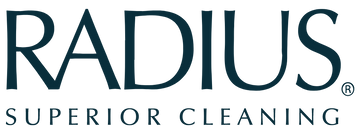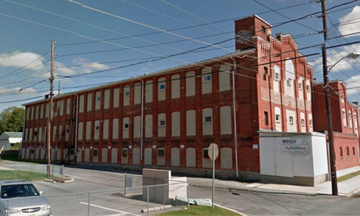From Silk to Toothbrushes at the Kutztown Silk Mill
May 13, 2020
This historic silk mill in Kutztown, Berks County was recently transformed into the new home of toothbrush manufacturer, Radius, thanks to the federal and state historic preservation tax credits.
Silk History in the Lehigh Valley
On January 22, 1912, Desiderius George Dery, the largest individual producer of silk in America -possibly in the world – purchased the ca. 1895 Kutztown Silk Mill on Willow Street in Kutztown, PA.
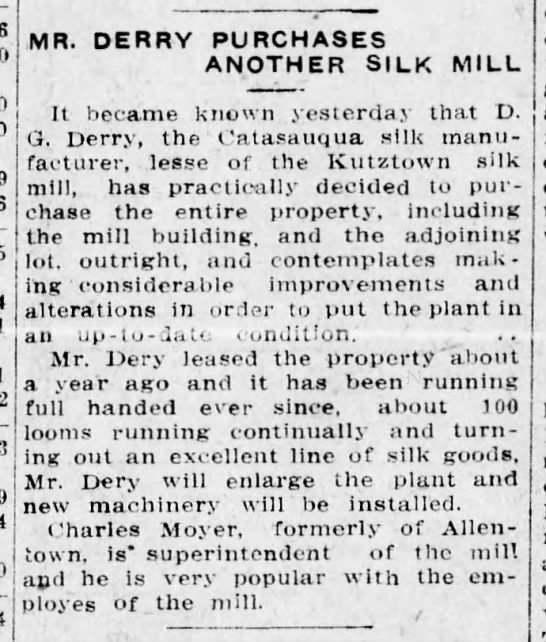
Dery was born in Austria-Hungary in 1867 and graduated from the Vienna Textile Academy and St. Mary’s Academy. He settled in the Catasaqua area of Lehigh County.
He operated sixteen plants: fifteen in Pennsylvania – over half in the Lehigh Valley – and one in Massachusetts. In Pennsylvania, this collection of mills employed over 3,280 people and ninety-two hands of these hands were employed at the Kutztown Mill.
Many of these workers were women and children from Kutztown and the surrounding community. While, the coal mines and heavy industries of eastern Pennsylvania provided work for immigrant men, their wives and children were able to work in the silk mills as low-cost labor.
The production of his plants turned out 12,500,000 yards annually valued at $7.5 million.

During the 1920s, silk production began to decline on the east coast in states like Pennsylvania and New Jersey, two of the leading American producers at the turn of the 20th century.
The reasons included mills moving to southern states because of cheaper labor costs, the demands for silk decreased with introduction of other materials such as nylon and rayon, and all imported silk was coming from Japan.
As a result, in 1923, Mr. Dery was forced into bankruptcy when the price of silk declined suddenly. The Kutztown Silk Mill was one of many in the Lehigh Valley that was purchased by Amalgamated Silk Mills, which was a collection of silk mill owners from the mid-Atlantic region.
Over the next few decades silk production would mostly be eliminated by the increase of international competition, leaving many silk mill structures empty or used for other manufacturing.
Radius to the Rescue
The Kutztown Silk Mill was one of many large industrial building types that went through years of being unoccupied and underutilized throughout the 20th and early 21st century.
Fortunately, a toothbrush company named Radius, which has been making great eco-friendly and ergonomically oral hygiene products for many years, decided to move from their old home in a restored historic feed mill (also in Kutztown) to the unoccupied Silk Mill. The reason for the move was that their production services outgrew their allowable square footage size.
Luckily for the owner Kevin Foley, the employees, and the Borough Kutztown, there just so happened to be another larger vacant industrial mill a short distance away on Willow Street.
A perfect fit for an architect graduate, toothbrush designer, and historic preservationist.
Conditions before Rehabilitation
The Kutztown Silk Mill is comprised of three buildings totaling roughly around 40,000-square-feet. It is also located in the 100-year floodplain.
The features on the exterior of the Silk Mill consisted of an unfortunate manipulation of window and door openings, deteriorated masonry and wood components, poorly designed and failing roof, several ad-hoc additions, in particular a one-story perpendicular concrete masonry 1940s addition that was used to make parachutes during War World II.

On the interior the features consisted of wood and concrete flooring, unfinished brick perimeter walls, and exposed structure components such as columns, beams, and joists in large open spaces. Vertical circulation consisted of one simple utilitarian concrete stair and vacant elevator shafts.
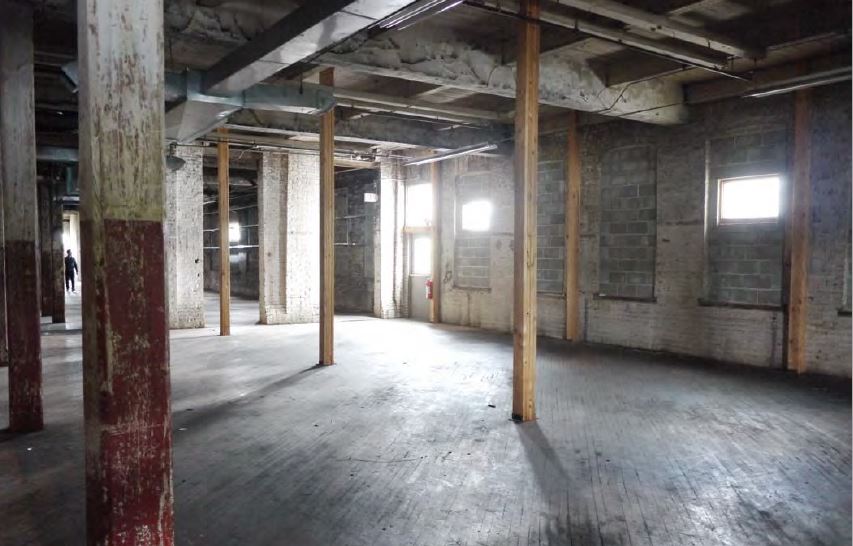
Many of these surviving features have experienced the test of time and had many issues with appearance and stability. The window replacement alone made this a challenging process to rehabilitate the existing mill.
Rehabilitation Work
The ongoing rehabilitation work of Kutztown Silk Mill includes window, door and roof replacement, roof structure redesign and repair due to past fire damages, masonry re-pointing and cleaning, and restoring fire-escape.
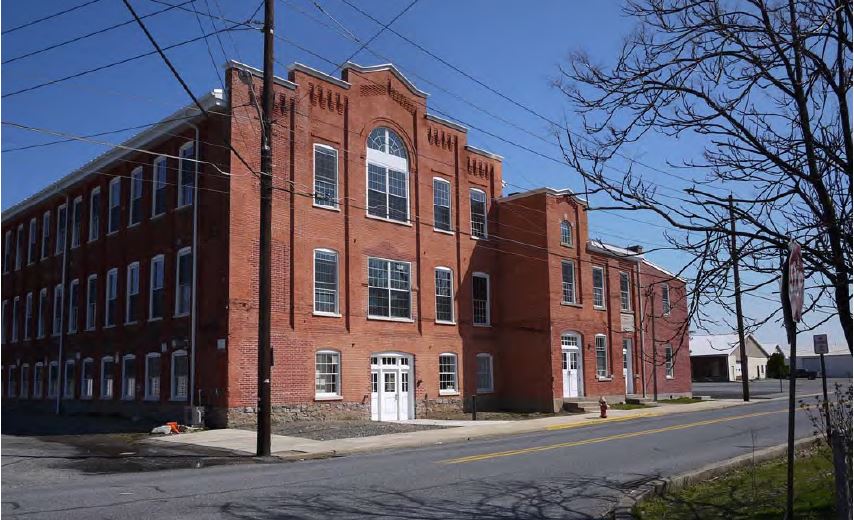
On the interior ongoing work repairs and restores of historical features such as the wood flooring, exposed brick perimeter walls, wood trim and fire doors, and the exposed structure.
New features such as modern bathrooms and break areas were also incorporated into the rehabilitation design along with updating mechanical, electrical, and plumbing components throughout the building to bring the building up to today’s standards for occupancy and life safety.
The main original mill building features the main entrance, a factory store and storage space for production and finished parts on the first floor, floss and toothpaste storage on the second floor, and corporate and administrative offices on the third floor.
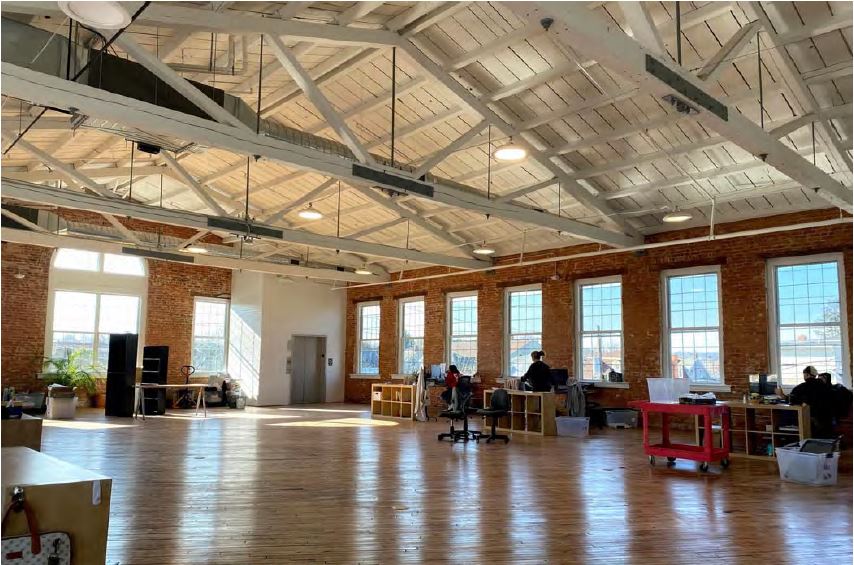
The single-floor 1940s addition houses highly technological automated machines that install bristles in toothbrushes, machines for injection molding, and additional space for assembly, packaging, and logistics.
Addressing the 100-Year Flood Plain Issue
As the future use of the Silk Mill for light industrial use is similar to the historic industrial use and the owner takes pride in historic buildings and craftsmanship, the proposed rehabilitation work did not present major challenges in meeting the Secretary of the Interior’s Standards for Rehabilitation and receiving approval.
The biggest obstacle for the project was getting local building code approval to address local 100-year flood plain ordinance, which would have required the infilling of all first-floor windows and entrances and abandoning use of the first floor.
Those changes did not meet the Standards and impacted the financial viability of the project. The project team had several meetings and revised the plans many times before finding a solution that met the intent of the flood ordinance, retained the historic character of the building, and was financially viable. The solution was to limit vulnerable areas of the first floor to storage use with raised mechanical systems.
As part of this negotiation, the PA SHPO issued a variance letter supporting the owner’s request to meet the intent of the flood ordinance and retain the historic character of the building.
These continued discussions and negotiations are a major part of PA SHPO’s role in assisting applicants in the historic tax credit application process and helping to solve problems that impact the rehabilitation of historic buildings.
Silk Mill is back in business
The Kutztown Silk Mill is nearing the finish line as construction is mostly completed. The numerous updates from the project team and site visits help confirm that work is moving in the right direction.
Upon approval of the Part 3 application, the project will benefit from both federal historic tax credits and Pennsylvania Historic Preservation Tax Credits.
The project has brought back to life the once staggering silk mill to its glory days of producing quality goods and supporting its community. Everyone that helped in this process should be celebrated and commended for their efforts.
This is one more great example of the historic tax credit at work, helping companies and communities become better places.
